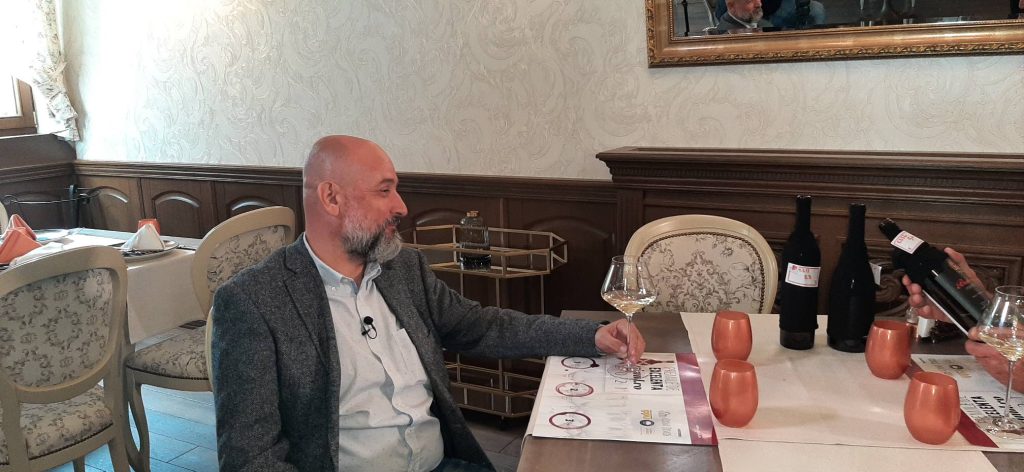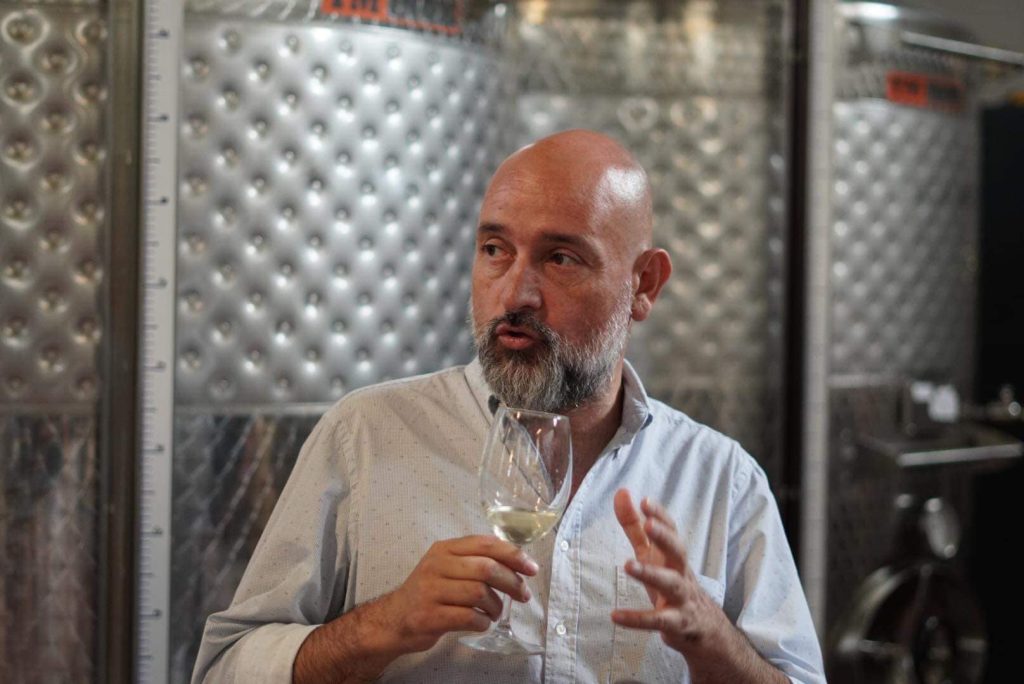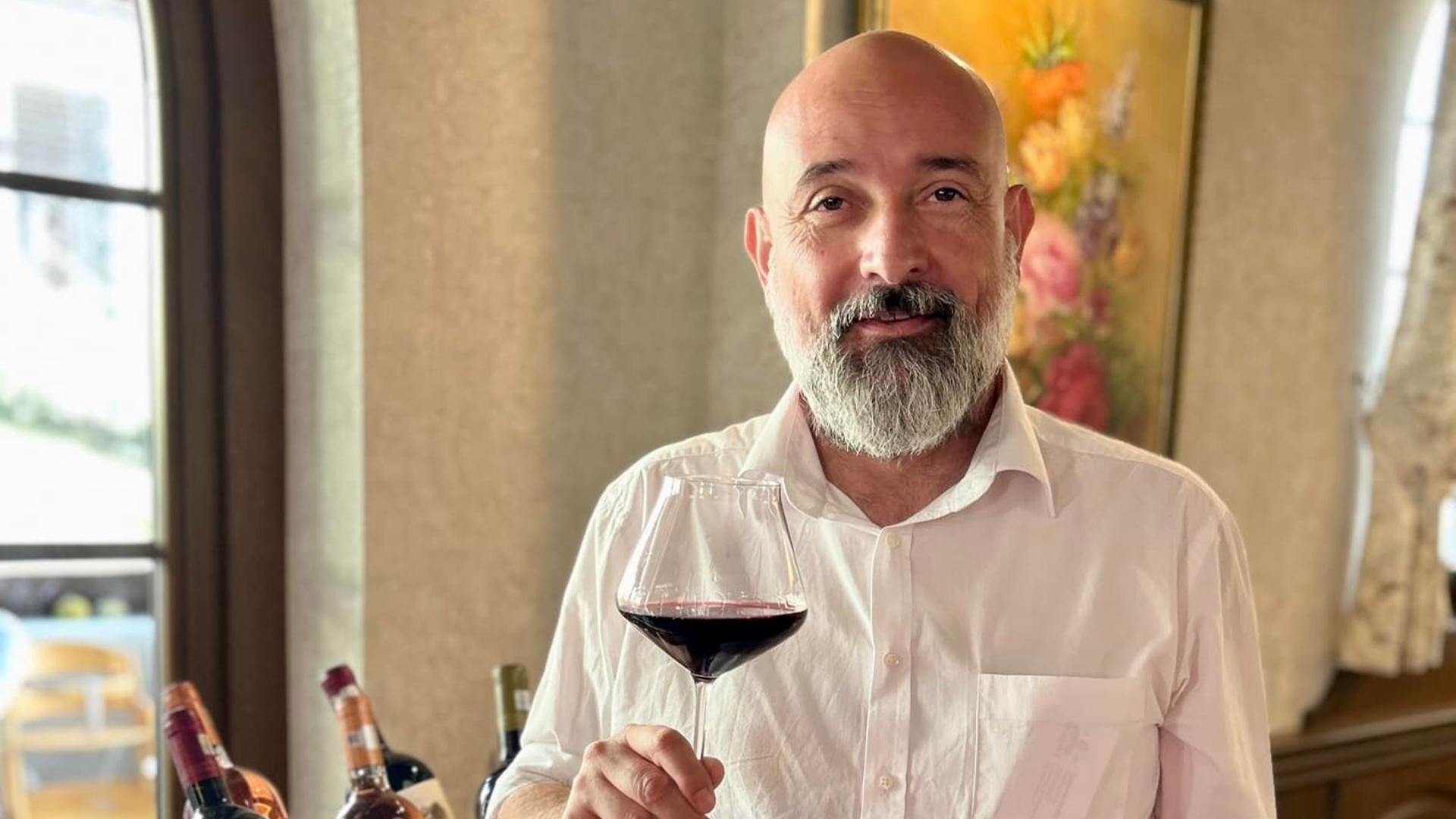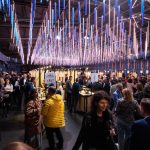The second part of the interview with Cezar Ioan ends with an observation: "Moldova did not enter the Romanian market with wine. It entered with wine, music, gastronomy, big festivals, a festive atmosphere, the Dionysian aura that wine presupposes. Moldovan wine doesn’t just mean Purcari; it means Zdob si Zdub, Irina Rimes, Carla’s Dream; it means stuffed cabbage rolls, cozonac, and sarmale (traditional dishes)…" Today, we continue our discussion, focusing on enotourism, the strengths and weaknesses of producers, and the burning question: why do people drink so little wine?
Youngsters are not snobs
Wines of Romania: What solutions do you see? We make wine, sell some of it, and our generation is disappearing. Without a market, making good wine is pointless, right?
Cezar Ioan: I’d like to have solutions, maybe I’d make money (laughs). There’s a category of young people, let’s call them hipsters, without any irony, people more inclined toward visuals, with an appetite, a curiosity, a visual sense, appreciating things that look good—places, things, labels that look good. They could be attracted to wine. But, as Exupery said, if you want to convince people to build ships, you don’t send them for wood, rope, sails, and nails; you tell them about the endless blue sea. Somehow, we need to see what else interests young people and offer them those things. From independent artists, visual artists, fashion that suits their tastes, created by people they like, music… and then introduce wine into that context. And they will come because wine remains a small fascination, not in the sense of snobbishness, as they are not snobs at their age.
Wines of Romania: You summed up the Gramofon model…
Cezar Ioan: In a way.
Wines of Romania: Theater, historical buildings, music, art.
Cezar Ioan: And wines, most of which have something to say. A hint of sweetness, not much, just enough to persuade. Very good wines without defects; quite the opposite, with significant qualities. Yes, there’s a recipe, like the winery events—a campfire, jazz music, people dancing, the joy of life. Wine is available within the ticket price, and you can retreat among the vine rows if you want to take an Instagram photo. Instagrammable spots are very important. If we want to sell the idea of a ship, in our case, wine, we have to sell everything that surrounds it because wine isn’t just a maniacal passion; it’s an entire context and part of a lifestyle.

A bottle of gin lasts for a week
Wines of Romania: How do you see the evolution of Romanian producers? Across segments, epochs… We started with an oligopoly.
Cezar Ioan: With the first funds and initial private investments, we talked about a market dominated by producers. Producers offered more than consumers knew to ask for. We’re talking about the 2000s, up until 2005-2007 and partially after. Then, due to the development of large retailers, numerically and geographically, it became a market dominated by these intermediaries, so to speak. To a large extent, it still is today. But then, the public began to matter—not necessarily ask for but matter. We return to the same public being offered craft beers, cocktails, the ability to spend 100 lei and take home a bottle to enjoy for a week, with their partner. You take a bottle of gin, two bottles of tonic water, and you can sip on it for a week. A bottle of wine, you generally need to finish once opened. A bottle of gin or spirits, you don’t. You can keep it indefinitely. Herein lies the drawback for wine, and people don’t see it as their first choice.
The retail is a marketing instrument
Wines of Romania: What is the current relationship between producers and retailers?
Caesar John: It’s poor because, if you ask me, producers don’t know how to work with retailers. Very few Romanian producers are literate in terms of working with retail. There are a few major producers that have developed this internal competency in selling, maintaining communication, providing data in the retailer’s required format, offering selection arguments, not just based on price or discounts, which is important, but also on quality or story. Among small and medium-sized producers, there are still very few that understand that retail has become a very powerful marketing tool. A product on the shelf is seen by hundreds, thousands of people, and a week on the shelf equals a year of social media campaigns. This is if you know how to differentiate, if you know what you want to communicate. When you have 3-4-6 labels on the shelf, you can tell a story, and out of 300,000 people passing by, tens of thousands see you.
But this is not enough; you need to create a mix of how you present yourself, the story you tell, price, discount, sampling, quality, execution at the shelf—be cautious because there’s no use being at the shelf if you don’t have people to restock. If the three-six bottles you had on the shelf are sold out, you’re just one of many, and no one is there to replenish the product on the shelf. Hence, the need to have your person there, an intern or a company to handle this. Small wineries still don’t understand the importance of a product missing from the shelf for a week, how it affects sales. People forget, not just consumers but retailers too because their IT systems are rigid. If they see that a product has low daily sales, they stop ordering it.
So, if you don’t know these things, you can’t act upon them. With the risk of causing trouble for myself, I have to admit that the marketing people of wineries have fled, seduced by the allure of very volatile platforms—Facebook, Instagram, TikTok. They provide quick results, but they burn out quickly like magnesium—ignite instantly, shine, and extinguish rapidly. They don’t create an archive of the brand. When you look for something a year later on Google, you won’t find any results. Instead, they neglect their websites, leaving outdated information for years, whereas websites should be the main source of information.

On wine tourism: They must improve the recipes
Wines of Romania: What should producers do then?
Caesar John: They should pick up a book and read. It makes me laugh to think about the responses you’d get if you asked producers when they last read a book.
Wines of Romania: On marketing, technology…
Caesar Ioan: No, any book! Not articles or wine pump brochures, just a book. And how many books they read in a year. How can you get ideas if you don’t nourish yourself with ideas? Society, as a whole, faces a crisis of ideas because we don’t feed ourselves with ideas. We consume garbage and create garbage. We feed on shows, TikToks, YouTube videos of dubious quality.
Wines of Romania: How do you see wine tourism? It’s clear it has a future.
Caesar Ioan: Yes, it’s clear, and experience has proved it, especially in Dealu Mare. People were fascinated, they were fans, asking when the next one is, why it’s so rare… Not just Escape to Dealu Mare but also Open Gates Saturday and others. But I primarily talk about the Escape because people like being in large groups, meeting other people. Now, there are Airbnbs, and in some seasons, you may add the Sarata Monteoru resorts… There are still four hotels and about ten guesthouses within a 20-minute distance by bus, and they sit empty in the fall and spring. In the summer, it’s not possible due to contracts with the government, treatment tickets, etc. But maybe people will realize that 20 minutes isn’t much.
Another issue is that many producers insist on focusing on the manufacturing process. If you visit three producers in one day, they take you through the press, the must, etc… It’s not necessarily a spectacular process. There should be some coordination to avoid people going through the same process repeatedly. You should point out the differentiating factors and move on to the tasting.
My last issue: many wineries offer grissini with Parma or crudo ham during tastings. I believe wine enthusiasts deserve local gastronomy. Maybe you could bring in a local producer, and participants could buy from them and perceive their presence as an added service by the winemaker. It could be anything, not just pastrami and sausages; it could be jams, syrups, lavender… There’s a fascination with small-scale, organic, and artisanal production.
- 📃Interview by Radu Rizea
Source Photos: Cezar Ioan







